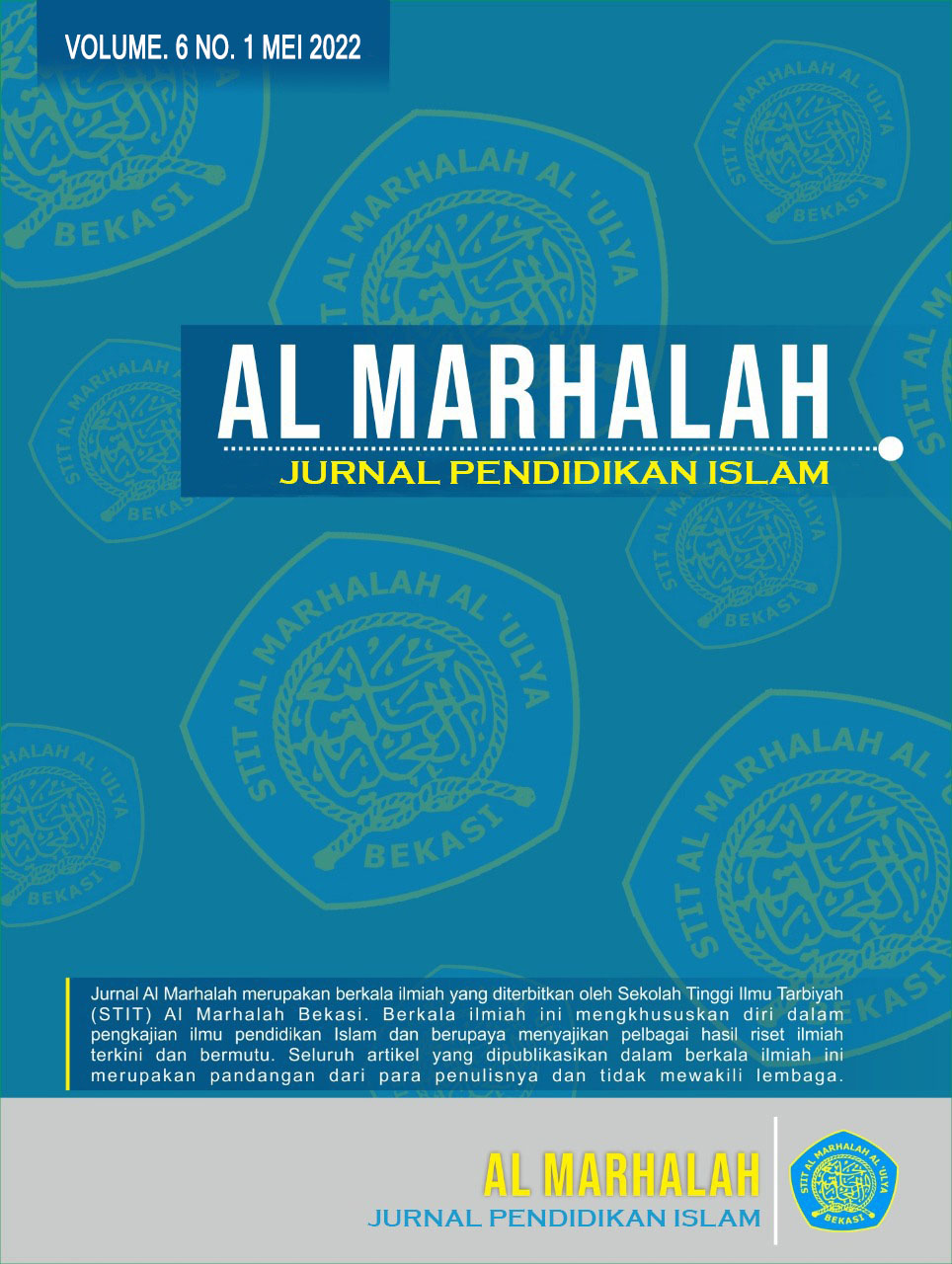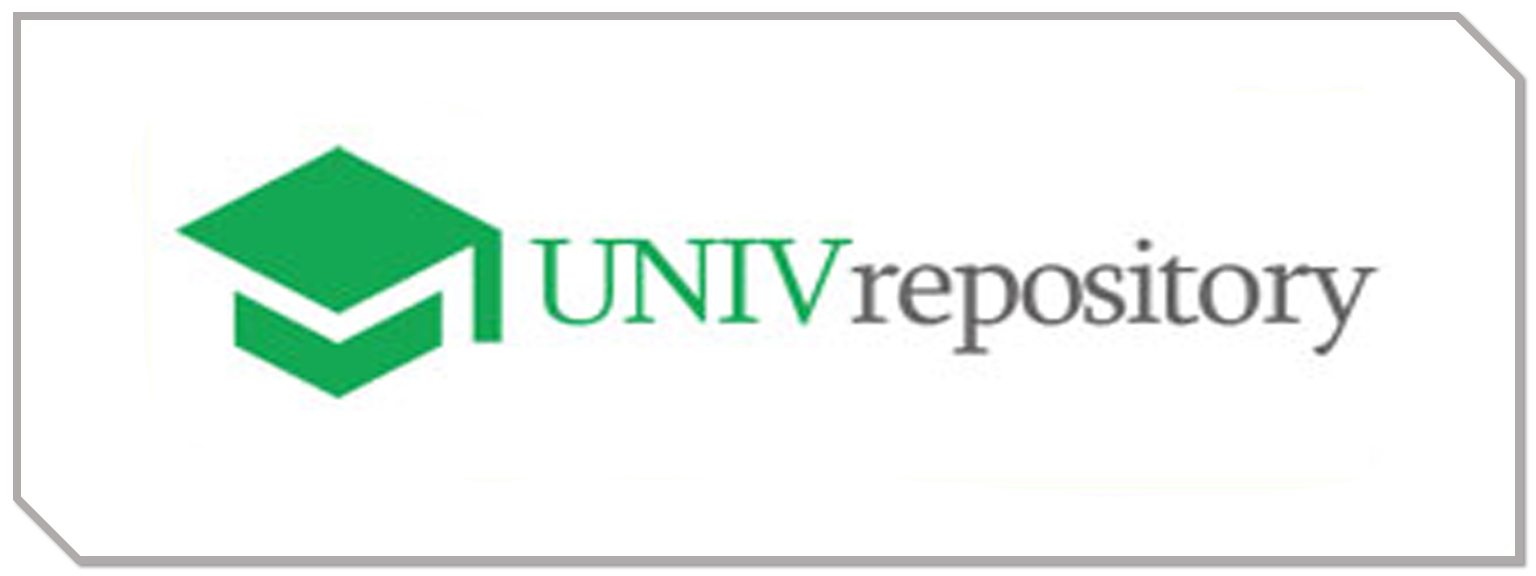NILAI-NILAI KARAKTER PADA BUKU TEMATIK SISWA KURIKULUM 13 KELAS IV SDN HARAPAN BARU III KOTA BEKASI
DOI:
https://doi.org/10.38153/almarhalah.v6i1.8Keywords:
nilai-nilai pendidikan karakter, buku tematik, kurikulum 13Abstract
Tujuan penelitian ini mendeskripsikan nilai-nilai pendidikan karakter dalam buku tematik siswa kelas IV. Pendidikan karakter merupakan fondasi yang harus dirancang, dan dikembangkan dalam buku ajar siswa. Kualitas isi buku akan mengantarkan siswa pada tujuan pendidikan dalam kurikulum. Penelitian ini merupakan penelitian analisis konten (content analysis)dengan subjek buku tematik siswa kelas IV dan fokus pada nilai-nilai karakter yang terkandung didalamnya. Hasil penelitian menunjukkan bahwa dalam lima buku tematik siswa kelas IV semester I secara eksplisit dan implisit telah mengembangkan tujuh nilai karakter: religius, jujur, disiplin, tanggung jawab, percaya diri, santun dan peduli. Nilai karakter religius memiliki frekuensi yang terendah, sedangkan nilai karakter yang lain dikembangkan lebih intensif dengan memberikan model dan contoh yang aktual dalam kehidupan.
References
Azzet, Akhmad Muhaimin. (2016). Urgensi Pendidikan Karakter di Indonesia: Revitalisasi Pendidikan Karakter terhadap Keberhasilan Belajar dan Kemajuan Bangsa. Jogjakarta: Ar-Ruzz Media.
Bungin, Burhan. (2015). Metodologi Penelitian Kualitatif Aktualisasi Metodologis ke Arah Ragam Varian Kontemporer. Depok: PT. Raja Grafindo Persada.
Desmita. (2011). Psikologi Perkembangan Peserta Didik. Bandung: PT. Remaja Rosdakarya.
Fauziyah, Nur Laily, Nabil, and Aldian Syah. “Analisis Sumber Literasi Keagamaan Guru PAI Terhadap Siswa Dalam Mencegah Radikalisme Di Kabupaten Bekasi.” Edukasi Islami: Jurnal Pendidikan Islam Vol 11 (2022): 503–17.
Kemendikbud. 2013. Peraturan Menteri Pendidikan dan Kebudayaan Nomor 64 Tahun 2013, tentang Standar Isi Pendidikan Dasar dan Menengah.
Kemendiknas. 2008. Peraturan Menteri Pendidikan Nasional Nomor2 Tahun 2008 tentang Buku. Jakarta: Badan Penelitian dan Pengembangan Pusat Kurikulum.
Kesuma, D., Triatna, C., & Permana, J. (2012). Pendidikan Karakter Kajian Teori dan Praktik di Sekolah. Bandung: PT. Remaja Rosdakarya.
Krippendorff, K. 2013. Content Analysis an Introduction to its Methodology. Thousand Oaks: Sage
Kurniawan, S. (2013) Pendidikan Karakter: Konsepsi dan Implementasinya
Secara Terpadu di Lingkungan Keluarga, Sekolah, Perguruan Tinggi, dan Masyarakat. Yogyakarta: Ar-Ruzz Media
Lickona, T. 1991. Educating for Character: How Our Schools Can Teach Respect and Responsibility. New York: Bantam Books.
Lickona, T. 2004. Character Matter: How to Help Our Children Develop Good Judgment, Intergrity, and Other Essential Virtues. New York: Touchstone
Moleong, Lexy. J. (2016). Metodologi Penelitian Kualitatif. Edisi Revisi. Bandung: PT. Remaja Rosdakarya.
Mulyasa, E. (2017). Pengembangan dan Implementasi Kurikulum 2013. Bandung: PT. Remaja Rosdakarya.
Mustari, M. 2014. Nilai Karakter: Refleksi untuk Pendidikan. Jakarta: Raja Grafindo Persada
Naim, N. 2012. Character Building: Optimalisasi Peran Pendidikan dalam Pengembangan Ilmu dan Pembentukan Karakter Bangsa. Yogyakarta: Ar-Ruzz Media.
Nugraheni, Aninditya Sri. (2012). Pengajaran Bahasa Indonesia Berbasis Karakter. Yogyakarta: Mentari Pustaka.
Sugiyono. (2016). Metode Penelitian Kuantitatif, Kualitatif dan R&D. Bandung: Alfabeta.
Suyadi. (2013). Strategi Pembelajaran Pendidikan Karakter. Bandung: PT. Remaja Rosdakarya.
Yaumi, Muhammad. (2014). Pendidikan Karakter Landasan, Pilar, dan Implementasi. Jakarta: Prenadamedia Group.








